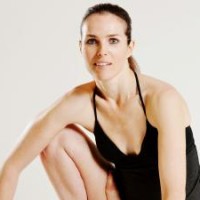Did you know the real book of yoga is long and boring?
It’s only “full of instructions on how to dance.” It also contains a lot of “charts, facts and figures.”
“It was written very long ago”…and with “things we are all too young to know.”
These words from the song The Book of Love is the practice of yoga in all its shapes, styles, forms and textures.
What indeed becomes clear after years of practice is that it’s an on-going practice not just for a few years but for life. My teacher often used to ask: Do you want to be an “insider” or an “outsider“? In other words, do you want to practice for life or just dabble around? Do you want to become absorbed by the practice from the outer kosha of the body and dig deep into the inner one of ananda (bliss)?
Photo: Heather Mortan (Tripura Harasana pose)As one progresses the struggle is more intense. The ego gets inflated and prefers to rest on one’s laurels claiming “it” has practiced long and well enough.
But returning to the basics and learning to be simple are not easy the further you go.
In my own practice as I learned more postures I could continually feel that I needed to work on my mental state. In the beginning it was to achieve a physical goal. But later on when the excitement wore off so did the challenge. This is very similar to most love affairs.
Often people think the more advanced you become the easier things get. I say it’s not easier but different and challenging for other reasons beyond the physical. I have found it is relatively easy to do a posture as compared to focusing my mind and to bringing it into a concentrated state for an extended period of time. And that is very hard since practicing an asana is not relatively easy.
This posture took me several years to learn after the dancer posture and many other practice sequences. This is also not the final frontier in terms of how far one can go. In practice it did not evolve either from only doing backbends. It was through meditation, counter postures and learning to relax.
The resting posture is one of the most important parts of practice and not a time mistakenly understood for doing nothing.
I had always foreseen my own shortcomings as being physical, but ultimately such a posture taught me about patience, tolerance and endurance. It taught me far more than extending my leg and back. Or, as my teacher would say to me when I was struggling with a position, “It is not your body, but your mind.”
His comment made me think. And he certainly did not mean go push your body more. He meant think more clearer, approach it differently and learn to be there.
So really the process of going there (not getting there since that assumes a fixed destination) is long and boring to watch, to talk about and to repeat. The final product is, however, (pause) different…but the ultimate message is to dance….Dance in between… Dance at the beginning and near the end…if there is one….
Like elephant yoga on facebook.





Read 2 comments and reply